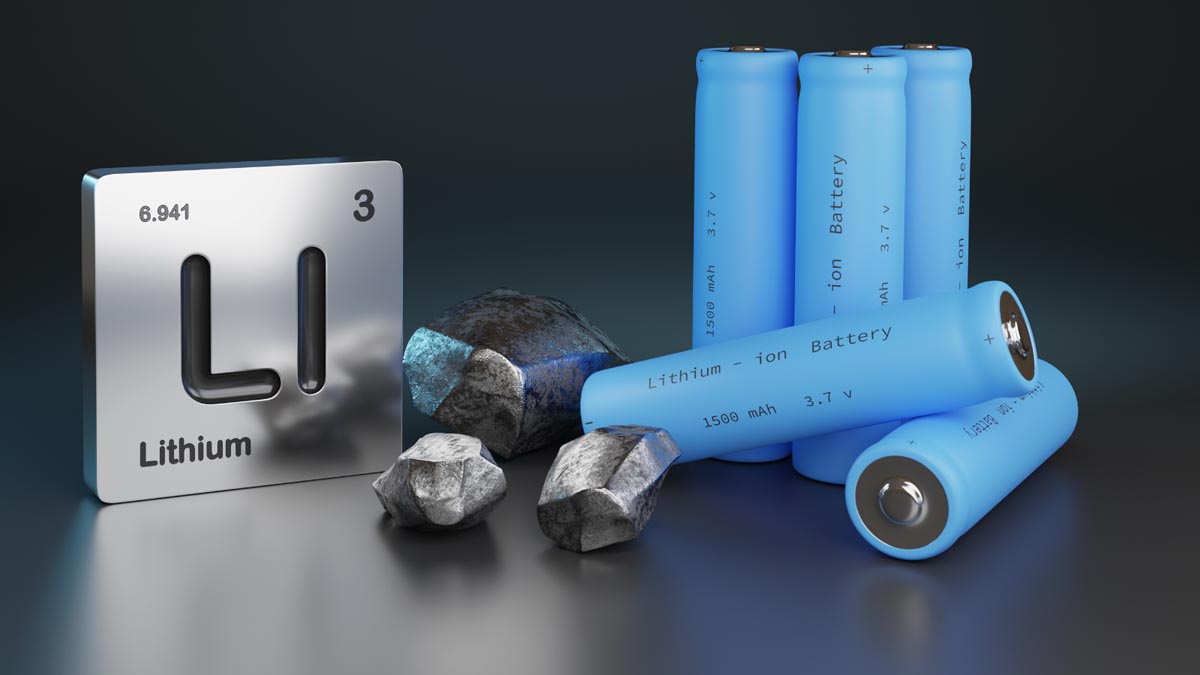One of the hottest topics today for consumers and emergency first responders is the hazards associated with lithium-ion batteries. More and more, popular devices and vehicles are powered by these high energy battery cells – such as drills, cell phones, laptops, power banks, e-cigarettes, e-scooters, e-bikes, e-wheelchairs, hoverboards, solar-powered systems, hybrid cars, and electric vehicles (EVs).
Why can lithium-ion battery cells be so dangerous? Their top three safety risks are 1) Thermal Runaway – when the cells enter an uncontrollable, self-heating state; 2) Battery Reignition – they are commonly known to reignite without warning – minutes, hours, days, and even weeks after all visible fire has been put out; 3) Stranded Energy – the energy remaining in a cell after efforts to safely discharge the stored energy in damaged cells. This important issue remains unresolved and presents a significant fire and shock hazard, especially for emergency responders.
When these battery-powered devices fail, there can be little to no warning. When they overheat, suffer mechanical damage, or have sustained water damage, they can spontaneously combust. The smoke emitted is extremely toxic and the flames burn extremely hot. Once ignited, they can shoot debris in all directions and cause nearby items to catch fire.
Why do lithium-ion batteries fail? The main reasons are 1) overcharging or using the wrong charger; 2) impacts such as dents or punctures; and 3) extreme temperatures, hot or cold. For safety reasons, many airlines now ban the carrying on board of certain devices containing these batteries.
Our intent isn’t to be alarmist, but rather to make sure you are informed and prepared in the event of an incident. Here are some basic dos and don’ts for smaller devices that can help keep you, your family, and your home safe:
Don’t modify or alter your device or change the types or configuration of the batteries.
Use only the correct battery and power adapter as issued by the device manufacturer. Be wary of cheaper aftermarket batteries purchased from third-party sources, like eBay or Amazon. Charge the device according to manufacturer directions. Using the wrong battery, charger or charging incorrectly has been a leading cause of battery failure and fire.
Charge and store the battery in an open, safe space away from combustible materials.
Don’t leave your battery charging unattended, and don’t store your battery near heaters or under heavy objects.
Don’t leave cell phones or other e-devices in the sun or on the dashboard of your vehicle. That can cause them to overheat and potentially malfunction. The battery can shoot out of a cell phone once ignited and launch across the room or vehicle interior.
Don’t keep e-cigarettes in your pocket or your mouth. If the small cylindrical battery combusts, there will be no warning and you could be burned or injured.
Be mindful of where you store your power banks. They contain larger size batteries, which can charge a cell phone 3-4 times. That amount of stored energy can cause a significant fire if it ignites inside your bag or backpack.
Keep your laptop well-ventilated to avoid overheating. If the unit is dropped or damaged in any way (including water), be on the lookout for unusual signs or activity. A laptop can explode without warning, propel debris across the room, and cause fires in surrounding areas.
If any device (cell phone, tablet, laptop, etc.) shows signs of damage or bulging – quickly and carefully take it outside away from the house and onto some non-flammable surface (concrete, rocks, gravel, sand, or dirt driveway). If it gets hot, or you hear hissing or popping sounds, or you see just a little white smoke – get away from the device, get everyone outside the structure, and call 911.
Never charge e-scooters, e-bikes, or hover boards inside your home, apartment, or garage. They contain hundreds of cylindrical lithium-ion battery cells, which can be catastrophic when they fail. If there is a problem, these e-mobility devices will give you a very brief warning. They will start to smoke and then quickly erupt into flames. A lot of explosive gases are released, and an entire room can deflagrate in under 30 seconds.
If you are present during the ignition or explosion of a lithium-ion battery powered device, do not touch it! The exothermic chemical reaction puts out extreme heat, around 1200 degrees Fahrenheit. The best action is to evacuate the structure or building, close the doors, and call 911. Tell Dispatch what happened, so first responders know they are dealing with a lithium-ion battery fire.
Conventional fires are fueled by oxygen and can easily be put out by water. They produce smoke containing toxins that you do not want to breathe.
Lithium-ion battery fires, on the other hand, are not fueled by oxygen. The smoke emitted from an explosion is highly toxic and should not be inhaled. Water can be used by emergency responders to cool down the battery cells, but – especially in the case of EVs – massive quantities of water are required to put out the fire. Even more concerning is that, when the flames seem to have been extinguished, these lithium-ion cells can reignite after several hours, days, and even weeks. Properly handling and discarding any failed batteries or devices is paramount.
Let’s consider the bigger sources of lithium-ion cells – such as recycling centers of discarded devices, and hybrid and electric vehicles.
All lithium-ion battery devices have a built-in obsolescence. Once they’ve been through up to 1000 recharging cycles, the unit must be replaced. This is also true for EVs. Imagine the ever-growing mountain of cast-off battery cells at recycling centers that can ignite without warning. Powder extinguishers are often used on such fires, but are ineffective, enabling the cells to reignite.
With the rapidly increasing number of EVs on roadways across the country, a trend forecasted to rise exponentially, scores of EV accidents where the lithium-ion battery cells caught fire are being investigated. A normal car fire can be put out with one fire engine’s tank of water, approximately 750 gallons. In the case of a single Tesla EV accident in January 2023 in Massachusetts, it took the crew 2.5 hours and 20,000 gallons of water to extinguish the fire, which erupted when the guardrail pierced the bank of lithium-ion batteries underneath as first responders attempted to clear the car from the roadway.
Damaged EV batteries burn much hotter. Flame temperatures can exceed 2500 degrees Fahrenheit!
Given the high risk of battery reignition, the key question is: When is the fire truly out? Incidents have been reported where batteries ignited on the tow truck after the wreckage was hauled away from the scene. What happens at the dump yard?
Firefighters face difficult scene conditions at any EV accident. They must 1) wear full personal protective equipment (PPE) including a self-contained breathing apparatus (SCBA), 2) have or procure an abundant water supply, and 3) remain cautious to avoid being caught in an explosion, hit by flying debris, or electrocuted by inadvertently making contact with the high voltage system.
Lithium-ion batteries present such serious challenges to first responders that the theme of Firefighter Safety Stand Down 2023 is “Lithium-Ion Batteries: Are you Ready?” Safety Stand Down is a joint initiative of the Fire Department Safety Officers Association, International Association of Fire Chiefs, International Association of Fire Fighters, National Fire Protection Association, and National Volunteer Fire Chiefs Council. New training programs are being developed and rolled out to educate and prepare first responders on these unique hazards and on critical EV details, including the size and location of the battery cells, which varies by vehicle make and model.
Most devices powered by lithium-ion batteries work safely for their life. Manufacturers are continuing to improve the reliability of these batteries. When devices are used, charged, and cared for properly, the risk of battery failure and fire is greatly reduced.
Editor’s Note: Cynthia Najim is a member of the Latir Volunteer Fire Department




